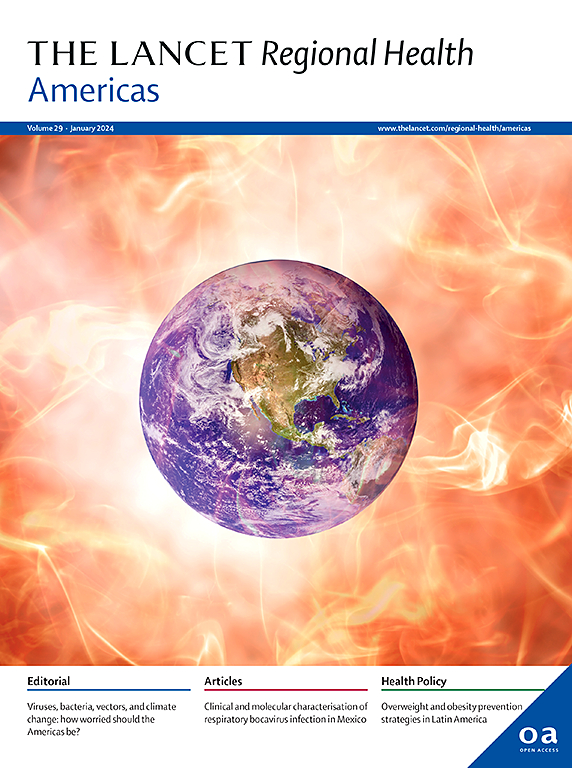COVID-19 impacts on decarceration for Indigenous, Black, and other racialized people in Ontario, Canada: an interrupted time series study
IF 7
Q1 HEALTH CARE SCIENCES & SERVICES
引用次数: 0
Abstract
Background
The COVID-19 pandemic response in many jurisdictions included efforts to depopulate correctional facilities. In the context of the overrepresentation of Indigenous and Black people in Canadian correctional facilities, we aimed to assess COVID-19 impacts on decarceration by race and Indigenous identity in Ontario, Canada.
Methods
We accessed correctional administrative data for all people incarcerated in provincial correctional facilities in Ontario, Canada between 2015 and 2022. We categorized people using self-reported data into one of five identity groups: Indigenous, non-Indigenous Black, non-Indigenous non-Black racialized, non-Indigenous white, or missing. We conducted interrupted time series analyses, treating COVID-19 as an event on April 1, 2020, for each of admissions, releases, number of people in custody, and person-time in custody.
Findings
Of 148,937 people who experienced incarceration, 85.4% were male and 14.5% were female, the mean age was 35.2 years (SD 12.2), and 11.7% were Indigenous, 12.1% were non-Indigenous Black, 12.1% were non-Indigenous non-Black racialized, and 48.9% were non-Indigenous white. Decarceration in the spring of 2020 benefitted all four race/Indigenous identity groups, with significant decreases in all four decarceration indicators for all groups. There was a significant interaction between COVID-19 decarceration and race/Indigenous identity group for the number of people in custody (p < 0.0001) and person-time in custody (p = 0.042), with decarceration disproportionately benefitting non-Indigenous white people. Compared with the period prior to April 2020, the relative rates of being in custody and of person-time in custody, respectively, were 0.70 (95% CI 0.68–0.73) and 0.73 (95% CI 0.70–0.76) for non-Indigenous white people, lower than those for Indigenous people: 0.76 (95% CI 0.72–0.81) and 0.82 (95% CI 0.76–0.88), non-Indigenous Black people: 0.76 (95% CI 0.74–0.78) and 0.79 (95% CI 0.76–0.81), and non-Indigenous non-Black racialized people: 0.76 (95% CI 0.73–0.79) and 0.79 (95% CI 0.76–0.83).
Interpretation
Decarceration in Ontario in 2020 was inequitable, exacerbating the disproportionate exposure of people who are Indigenous and Black to time in custody and to the adverse health impacts associated with incarceration during the COVID-19 pandemic. These findings emphasize the need for targeted strategies to foster equitable health and justice outcomes, including during public health emergencies.
Funding
Department of Family Medicine, McMaster University.
2019冠状病毒病对加拿大安大略省土著、黑人和其他种族化人群去隔离的影响:一项中断的时间序列研究
在许多司法管辖区,应对COVID-19大流行的措施包括减少教养设施的人口。在加拿大监狱中土著和黑人比例过高的背景下,我们旨在评估2019冠状病毒病对加拿大安大略省按种族和土著身份解除监禁的影响。方法:我们获取了2015年至2022年间在加拿大安大略省省级惩教机构服刑的所有人员的惩教管理数据。我们使用自我报告的数据将人们分为五个身份组:土著,非土著黑人,非土著非黑人种族化,非土著白人或失踪。我们进行了中断时间序列分析,将2019冠状病毒病视为2020年4月1日的事件,分别对入院、释放、在押人数和在押时间进行了分析。结果148,937名被监禁者中,85.4%为男性,14.5%为女性,平均年龄为35.2岁(SD 12.2), 11.7%为土著,12.1%为非土著黑人,12.1%为非土著非黑人种族化,48.9%为非土著白人。2020年春季的脱碳使所有四个种族/土著身份群体受益,所有群体的所有四个脱碳指标都显著下降。在被拘留人数方面,COVID-19的宣告与种族/土著身份群体之间存在显著的相互作用(p <;0.0001)和人被拘留时间(p = 0.042),其中非土著白人获得的好处不成比例。与2020年4月之前相比,非土著白人的相对被拘留率和被拘留次数分别为0.70 (95% CI 0.68-0.73)和0.73 (95% CI 0.70 - 0.76),低于土著:0.76 (95% CI 0.72-0.81)和0.82 (95% CI 0.76 - 0.88),非土著黑人:0.76 (95% CI 0.74-0.78)和0.79 (95% CI 0.76 - 0.81),非土著非黑人种族化人群:0.76 (95% CI 0.73 - 0.79)和0.79 (95% CI 0.76 - 0.83)。2020年安大略省的监禁是不公平的,在2019冠状病毒病大流行期间,原住民和黑人被监禁的时间和监禁对健康的不利影响加剧了他们的不成比例。这些调查结果强调需要制定有针对性的战略,以促进公平的卫生和司法成果,包括在突发公共卫生事件期间。麦克马斯特大学家庭医学系。
本文章由计算机程序翻译,如有差异,请以英文原文为准。
求助全文
约1分钟内获得全文
求助全文
来源期刊

Lancet Regional Health-Americas
Multiple-
CiteScore
8.00
自引率
0.00%
发文量
0
期刊介绍:
The Lancet Regional Health – Americas, an open-access journal, contributes to The Lancet's global initiative by focusing on health-care quality and access in the Americas. It aims to advance clinical practice and health policy in the region, promoting better health outcomes. The journal publishes high-quality original research advocating change or shedding light on clinical practice and health policy. It welcomes submissions on various regional health topics, including infectious diseases, non-communicable diseases, child and adolescent health, maternal and reproductive health, emergency care, health policy, and health equity.
 求助内容:
求助内容: 应助结果提醒方式:
应助结果提醒方式:


